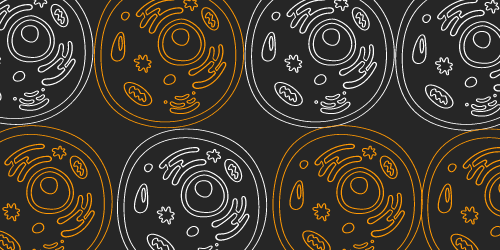Immunofluorescence guide
Related articles
Secondary antibodies resources
Alexa Fluor secondary antibodies
Biotinylated secondary antibodies
Enhancing Detection of Low-Abundance Proteins
9 tips for detecting phosphorylation events using a Western Blot
Western Blotting with Tissue Lysates
Immunohistochemistry introduction
Immunohistochemistry and Immunocytochemistry
Immunohistochemistry troubleshooter
Chromogenic and Fluorescent detection
Preparing paraffin-embedded and frozen samples for Immunohistochemistry

IMMUNOFLUORESCENCE GUIDE
Immunofluorescence(IF) is a morphological technique, that is useful for locating the distribution of the protein of interest in a given sample.
This assay relies on the specific bonding of a fluorescent conjugated antibody to the target protein, which can then be visualised under a fluorescent microscope on a dark background.
Three types of Immunofluorescence exist, all with different advantages and disadvantages:
Direct Immunofluorescence
This method uses only a primary fluorescent antibody and it's main advantages over the other methods are that is has fast staining, less non-specific background signal and that antibodies from the same host can be used.
Because no secondary antibodies are used, no signal amplification is present, making this type of assay less sensitive and best suited for experiments, in which the protein is abundant.
Indirect Immunofluorescence
Indirect IF utilises secondary and sometimes tertiary antibodies, which are able to detect multiple primary antibodies on the same host. Because of the variety of secondary antibodies that can be used in this assay, multiple fluorescent dyes can be visualised under the microscope.
Furthermore, the biggest advantage of Indirect IF is the signal amplification from the secondary antibodies, making this method suitable for less abundant protein samples.
The major disadvantage of this assay is that it is more time-consuming than direct IF.
Combined Immunofluorescence
Combined IF merges the two previous types of Immunofluorescence, making this method suitable for low abundant and abundant protein samples, with the biggest downside being the multiple step staining processes needed.
Sample collection and fixation
This assay can be used for individual cells, tissue sections or cultured cell lines. When preparing the samples, ensuring that they are fixed shortly after tissue removal is important. Depending on the species that the tissue has been taken from, formaldehyde, paraformaldehyde or other fixation solutions can be used.
The main thing to keep in mind is retaining the structural and morphological integrity of the sample and the antigen respectively.
Dehydration and embedding
Dehydration is a vital step in preparing the tissue sections, because if any water is left after this step, it can interfere with the cell morphology.
In the case of paraffin sections, the wax is hydrophobic and when preparing frozen sections, any ice crystals left can greatly affect the structure of the cells.
As a standard, dehydration consists of immersing the tissues in a series of increasing ethanol solutions, or alternatively in a sucrose solution.
Following dehydration, samples can be embedded by either the addition of molten paraffin or OCT compound for frozen sections.
Sectioning and staining
After the embedding process, the tissue can be sectioned by using either a standard or a freezing microtome. Depending on the purpose of the experiment and the cellular diameter the thickness is to be decided, but a general rule of thumb is that thinner slices perform better in direct mounting and thicker ones can produce better images when used with a free floating method, allowing the primary antibody to penetrate the slide from both sides.
When staining with a fluorescent conjugated antibody, the process should be carried out in the dark to minimise photobleaching.
Imaging
In order to determine the target location under the fluorescent microscope, either an already known protein can be stained or quantitative analysis of the fluorescence intensity and positive cells can be performed.
The second method relies on the idea that if the fluorescence intensity is stronger in a specific part of the sample, then that section should also have higher expression of the protein of interest.
